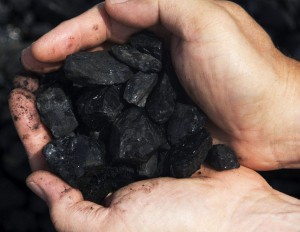 Electricity is something so basic most people just take it for granted, but do we really know where it comes from? Recently the Sierra Club started a campaign entitled, “Moving Campuses Beyond Coal”, encouraging students on campuses that primarily use coal-based energy to completely convert to using renewable energy resources. Some of these campuses, especially larger universities, have their own coal burning plants.
Electricity is something so basic most people just take it for granted, but do we really know where it comes from? Recently the Sierra Club started a campaign entitled, “Moving Campuses Beyond Coal”, encouraging students on campuses that primarily use coal-based energy to completely convert to using renewable energy resources. Some of these campuses, especially larger universities, have their own coal burning plants.
Gustavus isn’t one of those campuses; however, Director of the Johnson Center for Environmental Innovation Jim Dontje suspects that between 75 percent and 90 percent of Gustavus’ energy is provided by coal. The campus itself receives its electricity through the city of St. Peter, which receives about 90 percent of its power from a plant in Southern Minnesota.
According to the Sierra Club, coal energy is responsible for 40 percent of our nation’s carbon dioxide pollution. From the process of mining coal to burning it, the effects on the environment are devastating and often irreversible.
The process of mining coal involves destroying acres of land, causing permanent damage to ecosystems and nearby communities through water and air pollution. The most obvious result of pollution is the soot and smog that result from burning coal for energy.
In addition, the combustion waste that collects after it has been burnt contains many toxic chemicals like arsenic, lead and mercury, all of which make their way into ground and surface water, posing serious health risks to people who live near coal plants. Currently there are over 500 active coal burning plants in the country, many of them located in the Southeastern part of the country.
Why is the Sierra Club turning to college campuses to help make our country less dependent on coal? The opening paragraph of the “Moving Campuses Beyond Coal” campaign states, “Colleges and universities have the potential, capacity and responsibility to lead the nation when it comes to making the right choices.”Our campus has taken steps to perpetuate the idea that colleges can effect change.
President Jim Peterson signed the College and University President’s Climate Commitment in Sept. 2007. Under this agreement college presidents pledge to complete an emissions inventory, set a target date within two years for becoming climate neutral, take immediate steps to reduce greenhouse gas emissions, integrate sustainability into the curriculum and make the action plan, inventory and progress reports available to the public. Ohle has also signed this agreement, renewing his commitment to this program.
One of the most talked about solutions to reducing Gustavus’ carbon emissions is purchasing a wind powered turbine, but the decision for erecting one on or near campus is not final.
There are other clean energy options, however. “Conservation first. We use less electricity, we use less [coal-based] energy period,” Dontje said.
During the month of November the Greens will be hosting a campus-wide Eco-Challenge. “What I enjoy about Eco-Challenge is it’s not about doing difficult things,” Junior English Major and Greens Co-President, Susan Kranz said.
Greens Co-President and Junior Classics and Biology Major Katie Webster used the example that if every student didn’t use a tray in the Market Place one day a week, it would save a substantial amount of water. “A big factor of anything environmental is not to stick it to people; it’s just to raise awareness and get people to care,” Webster said.
That’s just what the campuses involved in “Moving Campuses Beyond Coal” say they are doing; the protests aren’t meant to cause a radical revolution in a short period of time, but rather to make students and the general public more aware of the effects of coal-based energy and what regular, everyday people can do to help limit its detrimental effects on the environment.